php editor Strawberry brings you an introduction to "Mac password-free ssh settings". SSH (Secure Shell) is a protocol for remote login and secure data transmission. In the Mac system, we can achieve password-free SSH login through some simple settings, and access remote servers or other devices conveniently and quickly. This article will introduce you in detail how to set up password-free SSH in Mac system to make your work more efficient and convenient.
Teach you step by step how to configure SSH multiple accounts on Mac
1. View the public key through cat ~/.ssh/id_rsa.pub, copy the entire public key, and configure it to the backend such as GitHub.
First, search for, download and install the Termius software in the App Store. After the installation is complete, open the application and enter the main page, click the [New Host] button in the lower right corner.
3. Configure iterm2 on Mac to remember the multi-site ssh account password. First, you need to install iterm2 yourself. After opening the iterm2 official website, click Download to download and install.
4. In the terminal (the root directory will do), enter ssh-keygen -t rsa -C email on gitlab.

How to establish an ssh connection on a mac computer, how to connect?
First we need to find the Termius software in the App Store, download and install it. After installation, open the software, enter the main page, and click the [New Host] button in the lower right corner.
Use the WIN Q key combination to open the search box, enter Remote Desktop Connection, and click the prompt below to open the connection window. Enter the computer name or IP address and port of the remote machine in the window. Click Confirm according to the system prompts.
Yes, you need to enable the ssh service on the mac. mac has openssh installed by default.
sudo systemsetup -getremotelogin If it has been turned on, the command will display Remote Login: On, otherwise it will display Remote Login: Off.
SSH password-free login and its principle
In the above login process, we can find that we need to enter a password every time, which is relatively troublesome. To solve this problem, SSH provides a method called public key login, which eliminates the need to enter a password.
2. Use the ssh-copy-id command to copy the public key to the remote host. ssh-copy-id will write the public key to the ~/.ssh/authorized_key file of the remote host. ssh-copy-id ldz@19160.1 After the above two steps, you will no longer need to enter a password when logging in to the remote host in the future.
3. Now log in from A as root, run scp /root/.ssh/identity.pubB:/root/.ssh/authorized_keys. The file name must be correct. 4. Now run #ssh from A and B will not need a password:) Basic principles: 1.
4. The specific operation is as shown in the figure below. Then we connect to machine B through ssh on machine A and execute the command date to check the time of machine B. We execute the command: ssh 1916159 date and you can see that you can log in to machine B without entering a password. The specific display is shown in the figure below.
5. Implementation principle Use a method called public and private key authentication for ssh login.
Use SSH to remotely log in to the server on Mac
Check whether SSH is installed. If it is not installed, enter yuminstallopensshserver to install it. Check whether the SSH service is running. If it is not enabled, use the serviceshhdstart command to enable it.
SSH remote terminal. If you only need to control the company's Linux server or computer terminal, you can use SSH to connect remotely. Enter the ssh username@server address in the Apple computer terminal application, and then enter the password to log in to the Linux server for remote control. VNC Viewer software.
You may be looking for various ssh software available on Mac online, but you may not know that Mac comes with its own remote connection tool! . Two methods are introduced below: Method 1: Connect directly using the command line. Enter the host IP, user name, password, and port number and click Quick Connect to connect.
After enabling the remote login service, use the Terminal window (Figure 6), then press the Shift-Command-K key combination, or select New Remote Connection from the Shell menu to pop up the New Remote Connection window. Select the Secure Shell service to see any enabled Macs in the server list.
Log in to your MAC system, open the browser, and download Microsoft's remote desktop tool. After downloading, click Install, as shown in the picture: Just click Continue to complete the installation. After installation, there will be this remote desktop icon under the MAC system, click to open it.
First of all, unlike Windows, Mac does not require a client like XShell for SSH connection. You can just use the terminal directly. I am using the Ubuntu 104 emulator here. In this case, it is most likely that the server prohibits root users from ssh remote login by default.
Conclusion: The above is a summary of the answers related to password-free ssh settings on mac compiled by this site for you. I hope it will be helpful to you! If your problem is solved, please share it with more friends who care about this problem~
The above is the detailed content of Password-free ssh settings for mac?. For more information, please follow other related articles on the PHP Chinese website!
 ip与mac绑定什么意思Mar 09, 2023 pm 04:44 PM
ip与mac绑定什么意思Mar 09, 2023 pm 04:44 PMip与mac绑定是指将特定的IP地址与特定的MAC地址关联起来,使得只有使用该MAC地址的设备才能够使用该IP地址进行网络通信。ip与mac绑定可以防止被绑定的主机的IP地址不被假冒,前提条件:1、MAC地址是唯一的,并且不可假冒;只能绑定与路由器直接相连的网络上的主机(也就是主机的网关在路由器上)。
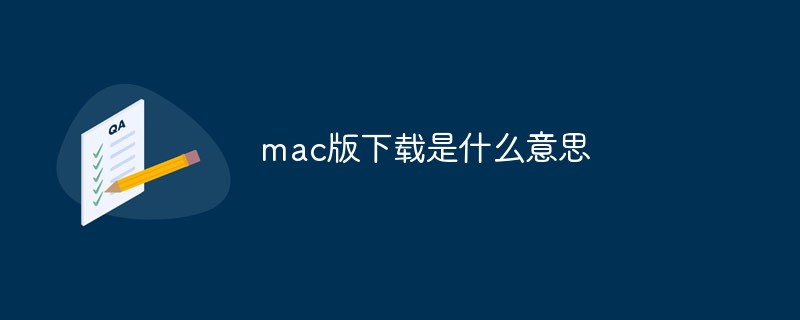 mac版下载是什么意思Mar 06, 2023 am 09:52 AM
mac版下载是什么意思Mar 06, 2023 am 09:52 AMmac版下载的意思是当软件在选择安装时,选择MAC版下载;Windows版和MAC版是两个不同的操作系统,所以大多数软件在选择安装的同时需要选择Windows版还是MAC版。
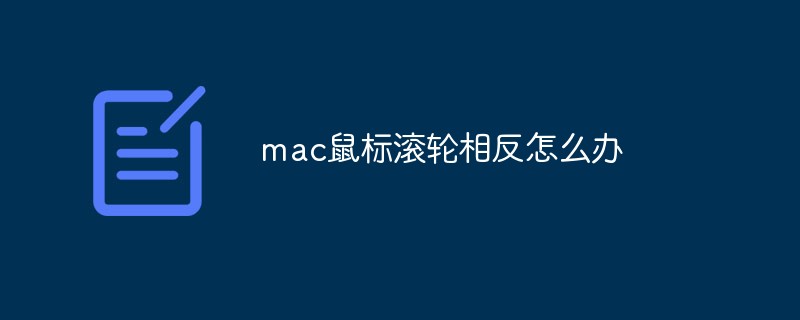 mac鼠标滚轮相反怎么办Mar 16, 2023 pm 05:44 PM
mac鼠标滚轮相反怎么办Mar 16, 2023 pm 05:44 PMmac鼠标滚轮相反的解决办法:1、打开mac电脑,点击屏幕的苹果标志,然后选择“系统偏好设置”;2、在“系统偏好设置”窗口中,选择“鼠标”;3、在“鼠标”窗口中,将“滚动方向:自然”前面的勾去掉即可。
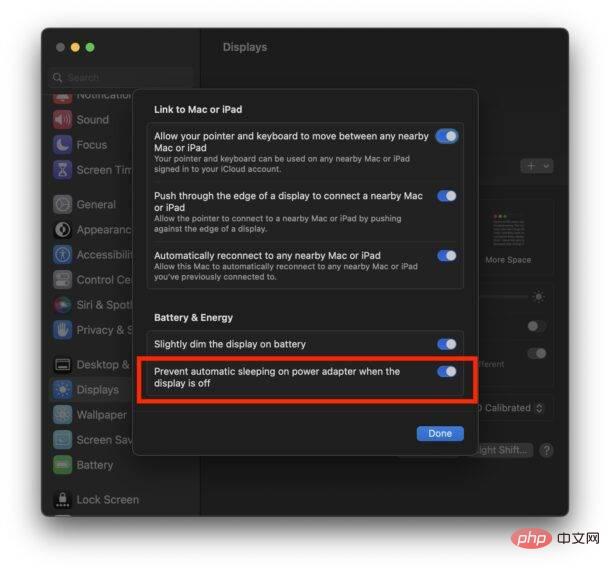 如何防止 Mac 在显示器关闭时进入睡眠状态 (MacOS Ventura)Apr 13, 2023 pm 12:31 PM
如何防止 Mac 在显示器关闭时进入睡眠状态 (MacOS Ventura)Apr 13, 2023 pm 12:31 PM显示器关闭时如何防止 Mac 休眠如果您希望 Mac 显示器能够在整个计算机不进入睡眠状态的情况下关闭,请在此处进行适当的设置调整:下拉 Apple 菜单并转到“系统设置”转到“显示”点击“高级...”切换“防止显示器关闭时电源适配器自动休眠”的开关现在 Mac 显示屏可以关闭,同时防止 Mac 本身进入睡眠状态。这可能主要与 Mac 笔记本电脑用户相关,但即使是那些没有 MacBook 的用户也可能会发现该功能很有用。
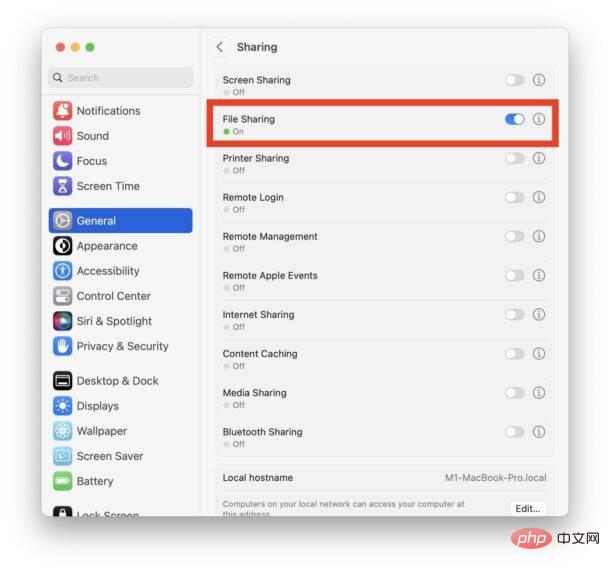 修复文件共享在 MacOS Ventura 中不起作用Apr 13, 2023 am 11:34 AM
修复文件共享在 MacOS Ventura 中不起作用Apr 13, 2023 am 11:34 AM修复 SMB 文件共享在 MacOS Ventura 中不起作用的问题从 Apple 菜单打开 Mac 上的“系统设置”应用程序转到“常规”,然后转到“共享”找到“文件共享”的开关并将其关闭通过转到 Apple 菜单并选择重新启动来重新启动 Mac重新启动后,返回共享系统设置面板并将“文件共享”重新设置为打开位置像往常一样恢复文件共享,它应该按预期工作如果 MacOS Ventura Mac 与另一台 Mac 或设备之间的文件共享突然再次停止工作,您可能需要在几天后或随机重复此过程。
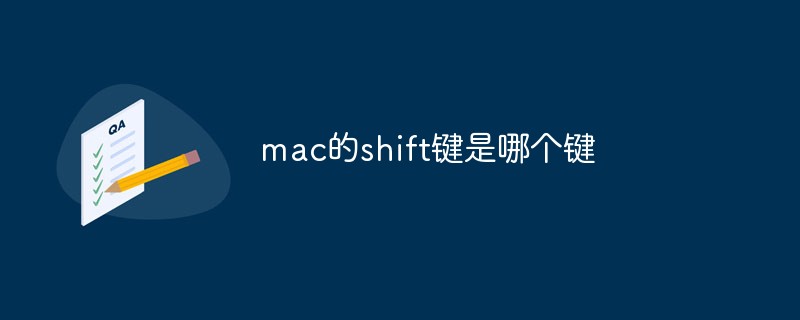 mac的shift键是哪个键Mar 13, 2023 pm 02:20 PM
mac的shift键是哪个键Mar 13, 2023 pm 02:20 PMmac的shift键是fn键上方、caps lock键下方的一个键,该键在键盘最左侧,由右下往上数第2个键;shift键是键盘中的上档转换键,可以通过“Ctrl+Shift”组合键来切换输入法。
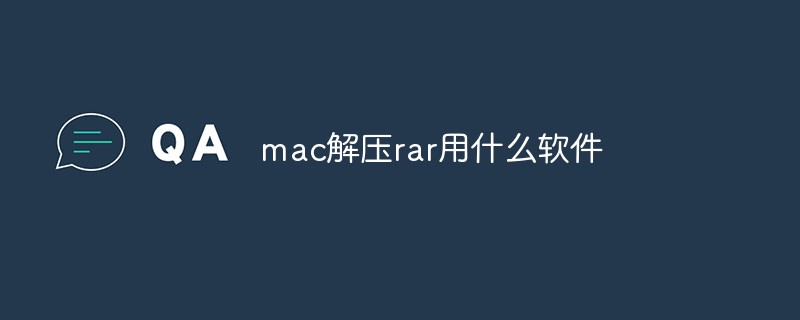 mac解压rar用什么软件Mar 03, 2023 pm 04:18 PM
mac解压rar用什么软件Mar 03, 2023 pm 04:18 PMmac解压rar的软件:1、The Unarchiver,是一款完全免费、小巧,而且非常易于使用的压缩、解压缩小工具;2、Keka,是一款免费、实用的压缩、解压缩工具,支持解压缩RAR格式的压缩包;3、360压缩大师,是一款免费的压缩、解压缩软件,完全支持RAR文件解压;4、MacZip,支持包括RAR在内的超过20种压缩格式的解压;5、BetterZip;6、FastZip。
 mac克隆是什么意思Jan 31, 2023 am 10:33 AM
mac克隆是什么意思Jan 31, 2023 am 10:33 AMmac克隆全称mac地址克隆,是固化在网卡上串行EEPROM中的物理地址,通常有48位长。mac克隆一般应用在路由器上,用户在用电脑直接拨号上网,后来又加了个路由器,通过路由器来实现多台电脑同时上网,这时要用到mac地址克隆了,就是把当前的电脑的mac地址克隆到路由器中去,因为运营商是把你的电脑mac地址绑定你的账号的,所以得克隆以后才能用。


Hot AI Tools

Undresser.AI Undress
AI-powered app for creating realistic nude photos

AI Clothes Remover
Online AI tool for removing clothes from photos.

Undress AI Tool
Undress images for free

Clothoff.io
AI clothes remover

AI Hentai Generator
Generate AI Hentai for free.

Hot Article

Hot Tools

EditPlus Chinese cracked version
Small size, syntax highlighting, does not support code prompt function

VSCode Windows 64-bit Download
A free and powerful IDE editor launched by Microsoft

ZendStudio 13.5.1 Mac
Powerful PHP integrated development environment

MantisBT
Mantis is an easy-to-deploy web-based defect tracking tool designed to aid in product defect tracking. It requires PHP, MySQL and a web server. Check out our demo and hosting services.

SublimeText3 Chinese version
Chinese version, very easy to use







